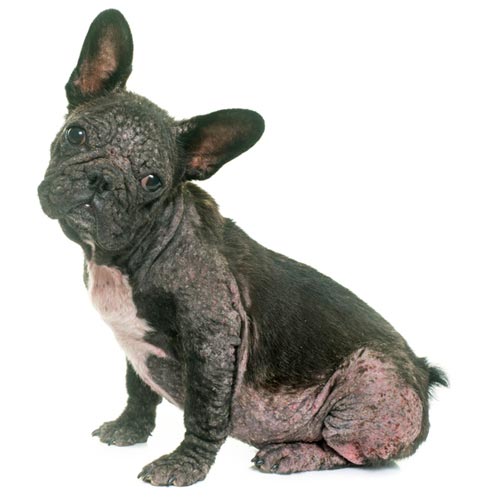
What Causes Black Skin Disease In Dogs. It is not a specific disease but a reaction of a dogs body to certain conditions. Pomeranian fur loss is called black skin disease because a dogs skin when exposed to air will discolour and appear black. Lichenification is the term used to describe skin that looks like elephant skin. Hyperpigmentation is a darkening and thickening of the skin seen in dogs.

These breeds include keeshonds Pomeranians miniature poodles toy poodles American. Hyperpigmentation appears as light-brown-to-black velvety rough areas of thickened often hairless skin. Other causes of your dogs skin turning dark or black may include yeast infections different types of dermatitis or even allergies. Malassezia dermatitis yeast infection Endocrine disorders. Dogs of certain breeds are particularly susceptible to black skin disease specifically those with plush coats. Thyroid irregularities and Cushings disease also may cause hair loss and black skin rashes on a dog.
Hyperpigmentation occurs when the skin has too much pigmentation resulting in black dog skin spots.
Hyperpigmentation appears as light-brown-to-black velvety rough areas of thickened often hairless skin. Here are the most common causes of this condition ranked in the order I see them. Dogs that are affected with black skin disease will have a normal coat as puppies. Its important to note that these breeds arent all entirely black. Hyperpigmentation occurs when the skin has too much pigmentation resulting in black dog skin spots. Cushings disease may present additional symptoms including faded coat color with a dull dry appearance as well as a pot belly small blackheads on the abdomen listlessness infertility increased thirst and urination weakness and loss of muscle mass.